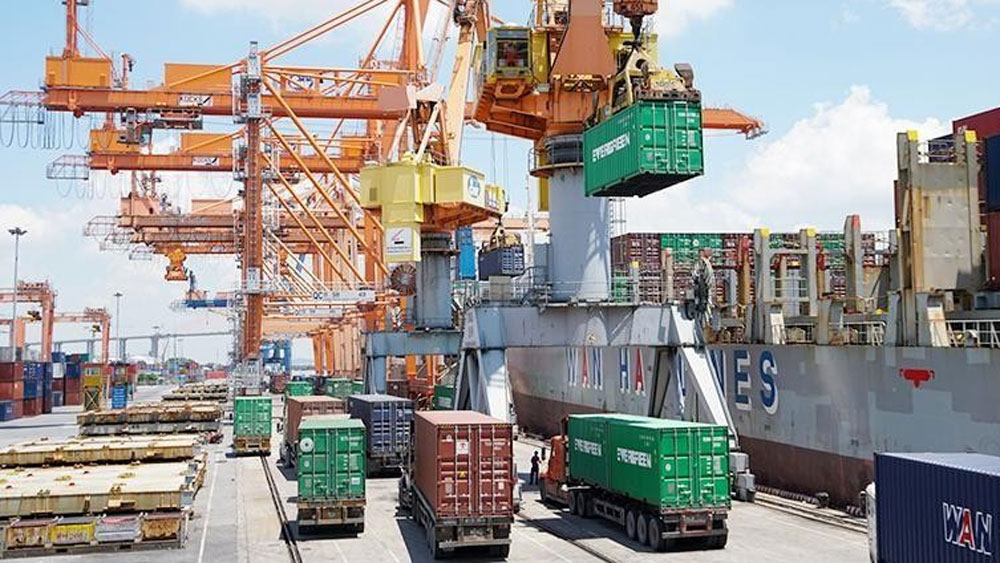Vietnam’s strong economic recovery in 2022 lays foundation for next year’s growth
According to Deputy Minister of Planning and Investment Tran Quoc Phuong, the target of 6.5% GDP growth for next year is based on the assessment that the Vietnamese economy is maintaining its recovery momentum and has a low risk of external shocks.
 |
|
Loading and unloading cargo at Tan Vu Port, Hai Phong. |
But as many international and domestic organisations predict 2023 to remain a challenging year, Vietnam’s growth is unlikely to reach the same high level as in 2022. Therefore, the projected growth of 6.5% for 2023 is a reasonable target.
The growth drivers will come from various factors such as domestic consumption, public investment, exports, and especially the continued strong recovery of the services sector.
Deputy Minister Phuong said services have made a positive recovery this year but have not reached pre-pandemic levels, with total international arrivals estimated at 1.8 million, compared to 18 million in 2019. A review of supply suggests that the services sector will recover fully in 2023, requiring measures to diversify tourism products to meet the new requirements of the market.
The tourism sector should develop night-time economic activities and restructure the sources of tourists by targeting high-quality markets with long stays and high spending.
Besides the positive outlook, 2023 is also expected to present major challenges to the Vietnamese economy, with strong inflationary pressure due to the Vietnamese economy’s high level of openness, the risk of supply disruptions if the Russia-Ukraine conflict is prolonged and other domestic factors such as natural disasters usually occurring at year-end.
Such concerns need to be identified clearly in order to make a proactive and effective response. On the basis of maintaining macroeconomic stability as the top priority, the Government has proposed an inflation target of 4.5% for 2023.
There are some grey areas in the bright economic picture of 2022, as seen in the rate of productivity growth and disbursement. Labour productivity is the only target Vietnam has failed to meet in 2022, while public investment is acting as a bottleneck to socio-economic growth.
Specifically, the labour productivity growth target for 2022 is 5.5%, but the actual figure is estimated at 4.7-5.2%, while economic growth is expected to outstrip the target by 2 percentage points and GDP per capita will also exceed the target.
According to economic experts, Vietnam’s productivity has improved but remains low compared to many countries in the region and risks falling behind. The solution is to enhance productivity in enterprises. To shorten the gap with developed countries in the region and the world, it is necessary for enterprises to incessantly innovate, employ advanced technology, and have an appropriate policy to for the effective use of labour and capital. This process cannot be done without the support of the Government’s mechanisms and policies, especially those regarding research and development activities.
Concerning public investment, the Ministry of Finance’s updated data shows that disbursement in the first nine months of the year is estimated to have reached 253.148 trillion VND (nearly 10.2 billion USD), equivalent to 46.7% of the target assigned by the government and slightly lower than the 47.38% recorded during the same period last year.
The Ministry of Planning and Investment has compiled a list of 25 obstacles related to public investment and proposed eight groups of solutions to be implemented to accelerate public investment disbursement. These include making thorough preparations for projects, enhancing the capacity of contractors and fine-tuning the laws on public investment activities.
Source: NDO
 Bắc giang
Bắc giang















Reader's comments (0)